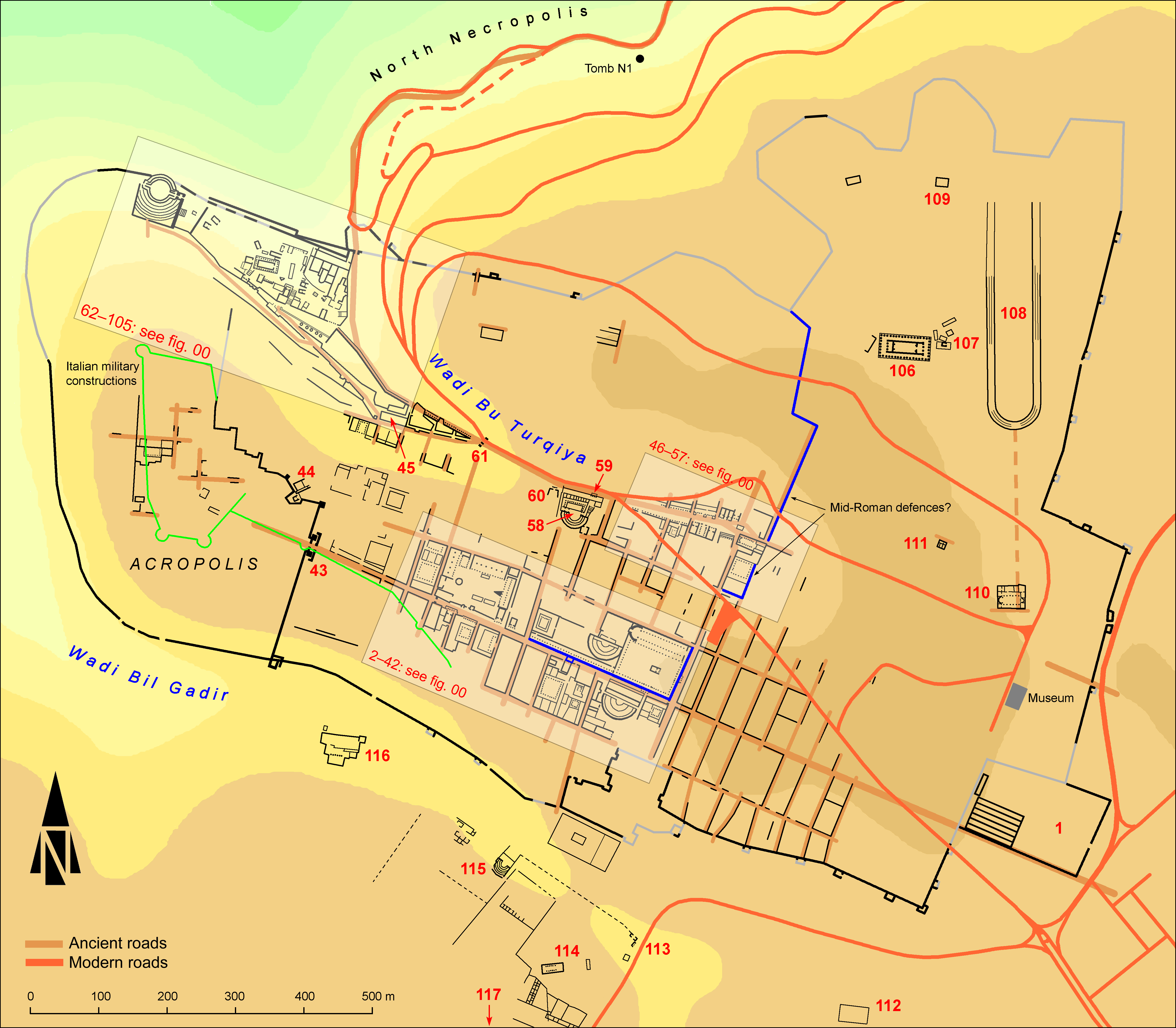EpiDoc XML:
IGCyr0094302
Trismegistos ID:
105896
Source description
Support: Three fragments apparently belonging to the same marble panel: fragment a. from left upper part (w: 0.062 × h: 0.09 × d: 0.022); fragment b. from left rim (w: 0.06 × h: 0.055 × d: 0.022); fragment c. broken on all sides (w: 0.055 × h: 0.09).
Layout: Inscribed on the face.
Letters: 0.012; slight serifs.
Date: Perhaps, second century BC
Findspot: Found in 1911 by H.F. De Cou at Cyrene ➚: Acropolis, central room of Apse Building.
Place of origin: Findspot.
Last recorded location: Seems to be now lost.
Text constituted from: Transcription from editor (CDL).
Bibliography
Robinson 1913, pp. 163-164, nn. 14, 15, 16; IGCyr 009430 ➚.
Text
Apparatus
a.1: ᾿Εν τᾶι ξ[---]: ᾿Εν τᾷ ξ[ενίᾳ ---] Robinson 1913
a.2: ΗΡΑΙΔΑ[---]: ῾Ηραιδα [ὁ] Robinson 1913 from photograph a last letter that could be Σ
a.3: ΠΙΣΣΕΓ[---]: πισ(vac. 1)σεγ Robinson 1913 from photograph the first letter might also be T; the last letter might also be a Π
French translation
Intraduisible.
English translation
Not usefully translatable.
Italian translation
Intraducibile.
Arabic translation
غير قابل للترجمه بشكل جيد
Commentary
Desperate disjuncted fragments, which resemble none of the formulaic series known at Cyrene. Robinson (from De Cou) informed that the left side was «slightly bevelled» and that «the first letter of each line is on the bevel, as though the marble had served some other purpose before being inscribed». From the photograph one may catch the two upper ends of a letter which might be sigma or chi. Therefore the bevel should be subsequent to the inscription and the stone was re-cut for a new use.
Some sequences are ambiguous, such as at l. 1 ἐν τᾶι or [τ]ένται.
For line 2, the feminine name Ἡραίς was accepted by J.M. Reynolds for Fraser – Matthews 1987, p. 202 and is also attested for a Cyrenaean woman in Egypt. Besides a variant Ἡραιίς is known at Cyrene in a clearer context (IGCyr1222002). For the present inscription an interesting possibility would be [Θ]ηραίδας, which is attested at Thera. However it does not match the small vestiges of sigma or chi mentioned above. Eventually the name of goddess Hera might also stay here at the dative.
Some other sequences might perhaps be interpreted with Greek words of poetic flavour. However this impression is not enough supported by facts, so that we did not include this item into GVCyr.
CC BY-NC-SA 4.0 Deed Attribution-NonCommercial-ShareAlike 4.0 International License.
All citation, reuse or distribution of this work must contain a link back to DOI: https://doi.org/10.60760/unibo/igcyrgvcyr2 and the filename (IGCyr000000 or GVCyr000), as well as the year of consultation.


